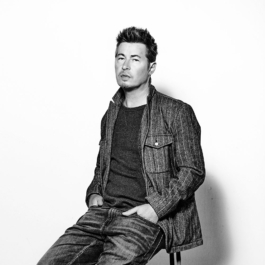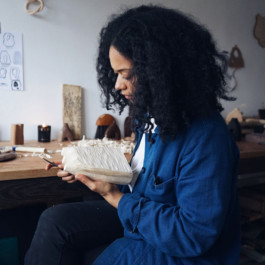In Argentina, barbecue is everything. A way of life, if you will.
It’s certainly so for Argentine celebrity chef Agustin Brañas who, after working in Michelin-starred restaurants for years, has rediscovered his passion for cooking over fire, using quality ingredients and gathering fine company. Indeed, he has returned to his roots: asado.
Here, he shares what asado is all about.


AMEX ESSENTIALS: What is the cultural significance of asado in Argentina?
Agustin Brañas: I’ve been lucky to be able to travel across Argentina a lot in recent years, from the Esteros del Iberá and the Selva Misionera, to Río Gallegos and Tierra del Fuego. In every corner of our country, someone is lighting a fire to make an asado. For us asado is a tradition, a ritual, a special moment.
I like to analyse the gastronomy of Argentina sociologically and historically. We’re a relatively “young” country when it comes to this, so we’re still discovering the identity of our food. But if there’s one thing I can say, it’s that asado – in any of its forms – is part of our life, our custom, our lifestyle and our history, our legacy to the world. It’s what the rest of the world identifies us with.
After spending many years in Europe, practicing and cooking in restaurants with and without Michelin stars, cooking and life brought me back to my roots – to asado, to meats and vegetables, to traceability, the constant search for quality raw ingredients – and this is something I try to apply to each of my projects. I really believe that asado defines us, in its essence and in everything that surrounds this ritual and the entire process.
How did you learn to make the perfect asado?
I first learned about asado on farms in the countryside. During the winter holidays when I was a child, I looked closely at this tradition of the farmers who, after finishing their work, started preparing an asado for their family and friends. Years later, and after travelling the world, this evolved into my own techniques, cooking points and styles. However I don’t know if there’s such a thing as the perfect asado – I think everyone has their own way of doing it. There are many different techniques, and it’s a fact that whoever is in charge of the asado, doesn’t want anyone else to get involved!
I really enjoy seeing how others do their asado. We learn from the technique and the style of whoever is in charge of cooking it at the time, so something key to learning is getting there early! The magic of the company, the folklore, the coming together, a good wine, the smoke… What’s happening around the fire is as important as how the meat is being done.
In my opinion, there are three ways to make a good asado. The first thing is to watch others, learning their techniques and tricks; you’ll take something different from everyone. The second is to practice: Like most things in life, the more you practice, the better the results. The third is to take the situation and the people into consideration. Whether it’s an asado on a late Friday night in your village, or at a wedding in a castle outside of London, the atmosphere is also key to success.

Take the situation and the people into consideration. Whether it’s an asado on a late Friday night in your village, or at a wedding in a castle outside of London, the atmosphere is also key to success.
What rituals do Argentines usually follow when preparing and eating asado?
There are many rituals, and everyone has their own. Some use only firewood, some use charcoal, others use both. We usually drink maté with the first people to arrive while putting the fire together. That is the first ritual.
Then, we get some snacks, prepare an appetiser and a vermouth, along with the conversation: music, chatting about football, getting the meat on the grill, distributing the coals, and passing around the bread. The bread is so important! We get a glass of wine, take out the offal, then the meats and the ice cream, which has become a classic for dessert. There is always someone in charge of bringing ice cream.
What mistakes are commonly made when making an asado?
Argentines have a habit of cutting the meat as soon as we take it off the grill, but the problem is that we lose a lot of the juices when we do this; juices that should stay inside the meat end up on the cutting table. Also, from my point of view, the meat should not be eaten extremely hot. We must let it rest for a few minutes after taking it off the grill and before cutting it, to let it cool and to ensure that the juices are homogeneously distributed throughout the meat.
Dit bericht bekijken op Instagram
Dit bericht bekijken op Instagram
What are your secrets for preparing a good asado – any particular ingredient or cooking technique?
It always depends on the latitude, but I like a mix of the power of charcoal and the charm of firewood. Be sure to source good meat, and to start early. Take your time, don’t rush it. Each different cut has its trick, and practice will help you master every technique.
Also, I don’t use fine salt. I use medium-coarse or coarse salt. I like the texture it gives to the meat when it comes in contact with the fire. I like to just barely grease the grill and the meat before putting them in contact.
There are many asado techniques, often imposed by the climate and the latitude. For example, do you know why in Patagonia, in the land of very strong winds, the asador spit is roasted vertically? Back in the day, it was very difficult to get charcoal, and the fire was always made from firewood. However the embers were consumed very quickly because of the winds, and the type of firewood they used didn’t produce good embers either. So, in the fight for survival, the flame and the heat of the firewood was used, taking advantage of the direction of the winds to bring this heat to the piece of meat and thus cook it with the heat of the flame rather than the embers.
What steps should one follow to make a good asado at home?
I recommend buying meat from your local butcher and establishing a good relationship with them, buying in advance. Also, take advantage of the coals for vegetables, and always add salt, lemon, a good vinegar, onion, garlic and parsley as condiments, and include any seasonal vegetables.
For the asado, meat with some fat has more flavour: think flap steak, rib-eye, rump steak, chorizo, black pudding, chinchulín and gizzard with lots of lemon. Assemble good company, a good wine, soda, some cheese and sausages as an appetiser, and let the fire take care of the rest.
Finally, where can we find your own version of Argentine asado?
I work with a catering company organising events in Europe and America. I’m also the cooking manager at Lo De Jesús, an emblematic grill restaurant in Buenos Aires with over 60 years of history. On TV, I share recipes on Cocineros Argentinos, where we’re always presenting new projects. And you can find me on Instagram at @agustinbranaschef, where I share my work.
[Photos: © Lo De Jesús]














Sorry, the comment form is closed at this time.